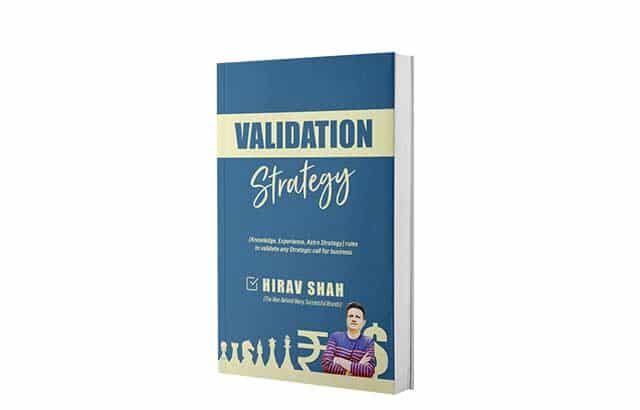Conducting a thorough business audit is crucial for the long-term success and growth of your business. By reviewing various aspects of your operations, you can identify areas of improvement and ensure that everything is aligned with your goals. Below, we’ll cover 10 essential areas to include in your audit. With the guidance of a business strategist like Hirav Shah—the Game Changer—you can drive better decisions and foster growth.
Table of Contents
Business Audit Checklist for Growth and Success
1. Business Audit Checklist – Financial Performance: Review Financial Health
Your business’s financial performance is one of the most critical areas to examine during a business audit. This process includes reviewing your financial statements, cash flow, and profitability.
- Example: If your business is seeing a dip in profitability, it might indicate that your costs are rising faster than your revenue. A common mistake is neglecting to evaluate profit margins regularly.
- Action Step: Analyze your financial statements, including balance sheets and income statements, to identify areas of concern. For instance, if you’re seeing negative cash flow, a deep dive into accounts payable/receivable can reveal inefficiencies or opportunities to optimize payment terms.
- Calculation Tip: Consider performing a gross margin calculation:Gross Margin=Revenue−Cost of Goods SoldRevenue×100\text{Gross Margin} = \frac{\text{Revenue} – \text{Cost of Goods Sold}}{\text{Revenue}} \times 100This will help identify if you’re losing profit on basic operations and which areas need attention.
2. Business Audit Checklist – Sales and Marketing: Evaluate Effectiveness and Growth Potential
The effectiveness of your sales strategies, marketing campaigns, and customer acquisition efforts should be carefully assessed.
- Example: Are you effectively reaching your target audience? If not, your marketing efforts might be too broad or poorly targeted.
- Action Step: Conduct a sales funnel analysis to pinpoint where leads are being lost. Evaluate your conversion rate (e.g., the percentage of leads that become paying customers).
- Business Strategist Insight (Hirav Shah): “A successful marketing strategy aligns with the current market trends and consumer behavior. Constantly evolving your digital presence and advertising tactics can accelerate growth.”
- FAQs:
- Q: How do I measure the success of my marketing campaigns?
- A: Analyze KPIs such as ROI (Return on Investment), customer acquisition cost (CAC), and customer lifetime value (CLV).
- Q: How do I measure the success of my marketing campaigns?
3. Business Audit Checklist – Operations: Streamline Processes for Maximum Efficiency
A business audit should focus on optimizing operational processes and maximizing productivity. Look at your workflows, systems, and procedures to identify inefficiencies.
- Example: If multiple departments are duplicating tasks, it can lead to wasted time and increased costs. For instance, if your sales and customer service teams are both reaching out to the same customers, it’s essential to integrate their efforts for better collaboration.
- Action Step: Perform a process mapping exercise to visualize and identify bottlenecks.
- Business Strategist Insight (Hirav Shah): “A lean operational process not only reduces costs but also enhances customer satisfaction. The smoother the operation, the faster the delivery of value to the customer.”
4. Business Audit Checklist – Human Resources: Optimize Employee Satisfaction and Development
Assess your HR policies, employee satisfaction levels, and training programs. A highly engaged team is one of your most valuable assets.
- Example: Employee dissatisfaction could signal issues with work culture, career development opportunities, or management practices. If you have high turnover rates, it could indicate problems that need immediate attention.
- Action Step: Conduct an employee satisfaction survey to gauge morale. Additionally, evaluate whether training programs are effective in upskilling your team.
- Business Strategist Insight (Hirav Shah): “A company thrives when it invests in people. Regular feedback, training, and career progression opportunities lead to happier, more productive employees.”
5. Customer Service: Ensure Satisfaction and Build Loyalty
Customer service directly impacts your reputation and can be a powerful tool for retention. Evaluate your current customer service processes, feedback mechanisms, and satisfaction levels.
- Example: If you receive a high number of customer complaints, this could indicate gaps in your service delivery, product quality, or post-purchase support.
- Action Step: Implement a Net Promoter Score (NPS) survey to measure customer loyalty. Use this data to create action plans for enhancing customer experiences.
- Business Strategist Insight (Hirav Shah): “In today’s world, customer retention is just as crucial as acquisition. Offering personalized experiences and resolving issues swiftly can turn customers into brand advocates.”
- FAQs:
- Q: What should I focus on in customer service training?
- A: Focus on communication, problem-solving, and empathy. Equip your team with the tools and knowledge they need to resolve issues quickly.
- Q: What should I focus on in customer service training?
6. Technology and IT Systems: Assess Technological Fit
Your business’s technology plays a pivotal role in improving operational efficiency and customer experience. Review the systems and tools you are using to ensure they align with your goals.
- Example: If your software tools are outdated, you might face inefficiencies or increased risk of data breaches.
- Action Step: Perform a technology audit to identify gaps in security, efficiency, or functionality. Consider upgrading systems or adopting new tools to streamline operations.
7. Legal Compliance: Ensure Adherence to Laws
Review your business’s compliance with applicable laws and regulations. This includes checking your contracts, licensing, intellectual property, and employee-related legal obligations.
- Example: If your business operates in multiple regions, you may be required to comply with different tax regulations. Failure to do so could result in penalties or legal disputes.
- Action Step: Conduct a legal audit with your legal team to ensure all aspects of your business comply with local, state, and federal regulations.
8. Risk Management: Mitigate Potential Threats
Identifying and managing risks is a critical component of the business audit. This includes assessing financial, operational, and market-related risks.
- Example: If you depend heavily on one customer for revenue, you might be exposed to financial risk if they leave. Diversifying your customer base can help mitigate this.
- Action Step: Review your risk management framework and create contingency plans for potential threats.
- Business Strategist Insight (Hirav Shah): “A business that plans for potential risks is better equipped to thrive during challenging times. Diversification, both in customers and products, can provide a safety net.”
9. Branding and Market Positioning: Reassess Your Identity
Your business’s brand and market positioning determine how customers perceive your product or service. Review
your current positioning and ensure that it aligns with your market and customer expectations.
- Example: If your market research indicates a shift in customer needs, your branding might need to evolve to reflect these changes. A rebranding strategy could help attract a new demographic.
- Action Step: Reassess your brand messaging, look at your competitors, and determine if your current position is still relevant.
10. Growth Strategy: Plan for the Future
Lastly, review your long-term business growth strategy. This should be a key part of your business audit, as it ensures you’re on track for continued success.
- Example: A business that has plateaued may benefit from exploring new markets or product diversification to reignite growth.
- Action Step: Work with a business strategist like Hirav Shah to develop a comprehensive growth strategy, whether through market expansion, new product lines, or strategic partnerships.
Business Audit Checklist – Conclusion
Performing a thorough business audit is an invaluable process for any company looking to improve its operations, financial health, and long-term success. By focusing on these 10 key areas, you can identify gaps, seize new opportunities, and make informed decisions that align with your business goals. And, with the insights of a Game Changer like Hirav Shah, you can take your business to new heights of profitability and efficiency.





















